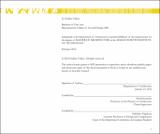| dc.contributor.advisor | Sheila Kennedy. | en_US |
| dc.contributor.author | Volicer, Nadine (Nadine M.) | en_US |
| dc.contributor.other | Massachusetts Institute of Technology. Dept. of Architecture. | en_US |
| dc.date.accessioned | 2012-04-23T16:03:12Z | |
| dc.date.available | 2012-04-23T16:03:12Z | |
| dc.date.copyright | 2012 | en_US |
| dc.date.issued | 2012 | en_US |
| dc.identifier.uri | http://hdl.handle.net/1721.1/70101 | |
| dc.description | Thesis (M. Arch.)--Massachusetts Institute of Technology, Dept. of Architecture, 2012. | en_US |
| dc.description | This electronic version was submitted by the student author. The certified thesis is available in the Institute Archives and Special Collections. | en_US |
| dc.description | Page 203 blank. Cataloged from student-submitted PDF version of thesis. | en_US |
| dc.description | Includes bibliographical references (p. 199-202). | en_US |
| dc.description.abstract | The use of wood is fraught with paradox. Wood as a building material is embraced for its naturalness, while the cutting of trees is indicted as a destruction of nature. Wood is lauded for its structural properties and visual appearance, but challenged for its lack of durability and dimensional stability; all traits tied to the original tree. The controversial field of transgenics further complicates matters as scientists now work to genetically modify trees for improved yield and performance. Many environmentalists argue that the risk of infecting native tree populations is too great, while others see potential for sparing native populations by using purpose-grown alternatives. Both camps claim to be working to halt global climate change. How can we locate today's wood industry within this disparity? Dilemmas inherent to wood use are entangled with conflicting attitudes towards nature. The urban forest is uniquely poised to address this debate through an opportunity to intersect nature and industry within the public realm. Phasing phytoremediation, timber and biomass production over time, the strategy of this thesis is to co-opt a network of underutilized and contaminated parcels in Boston's developing Innovation District as a system of productive landscapes. Transgenic trees are here considered as a means of stretching a given species' function and yield, and offer new opportunities for design. Initial years of tree growth provide plots that double as public green space while improved parcels are open for future development. On one such plot, the project envisions a wooden architecture that accounts for its own material, energy, and even the soil upon which it is built. By integrating systems of production and consumption into the public life of the city, the relationship between people and natural resources can be reestablished; the paradox made public | en_US |
| dc.description.statementofresponsibility | by Nadine Volicer. | en_US |
| dc.format.extent | 203 p. | en_US |
| dc.language.iso | eng | en_US |
| dc.publisher | Massachusetts Institute of Technology | en_US |
| dc.rights | M.I.T. theses are protected by
copyright. They may be viewed from this source for any purpose, but
reproduction or distribution in any format is prohibited without written
permission. See provided URL for inquiries about permission. | en_US |
| dc.rights.uri | http://dspace.mit.edu/handle/1721.1/7582 | en_US |
| dc.subject | Architecture. | en_US |
| dc.title | Life in the woods : production and consumption of the urban forest | en_US |
| dc.title.alternative | Production and consumption of the urban forest | en_US |
| dc.type | Thesis | en_US |
| dc.description.degree | M.Arch. | en_US |
| dc.contributor.department | Massachusetts Institute of Technology. Department of Architecture | |
| dc.identifier.oclc | 783297133 | en_US |
